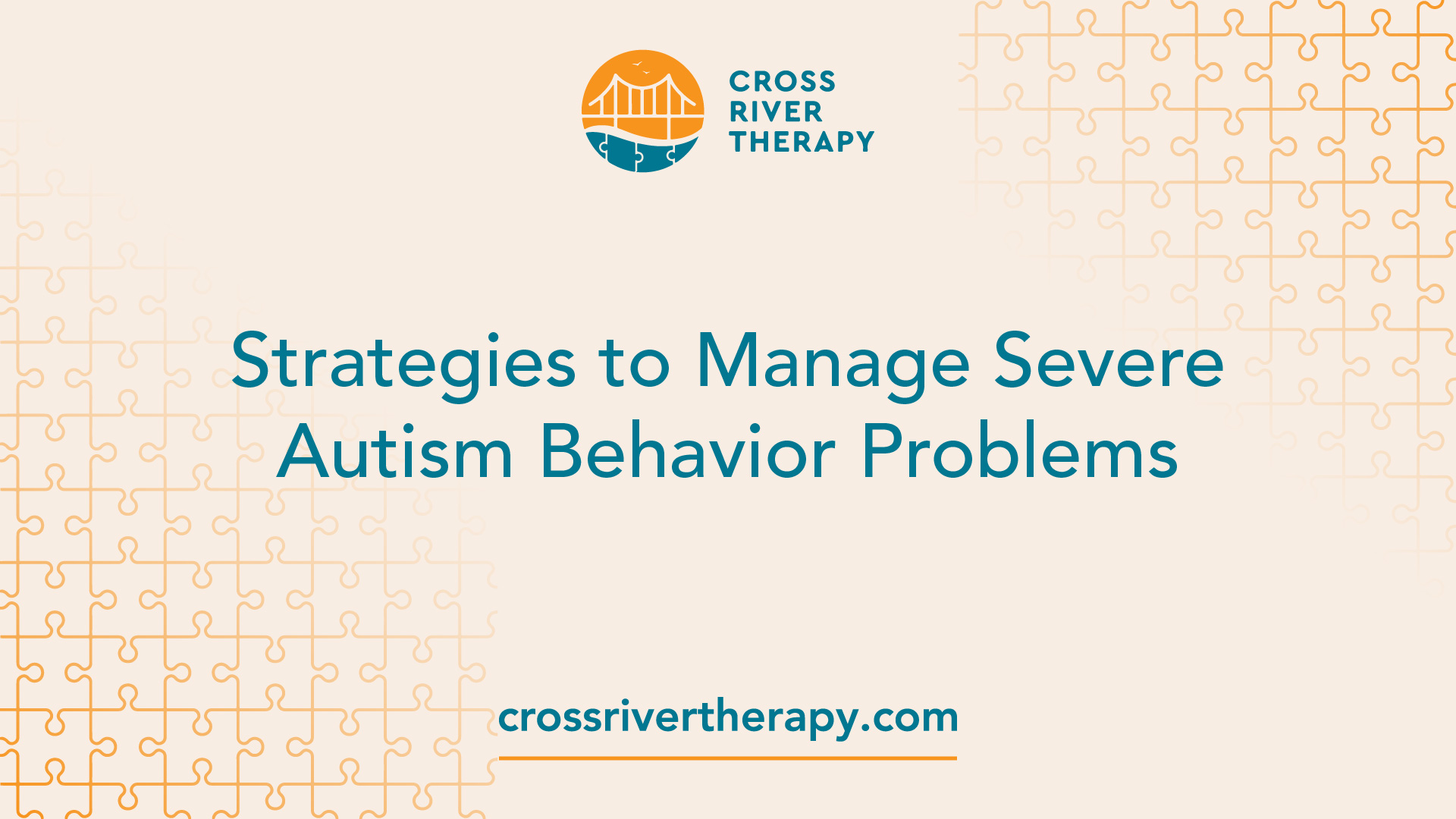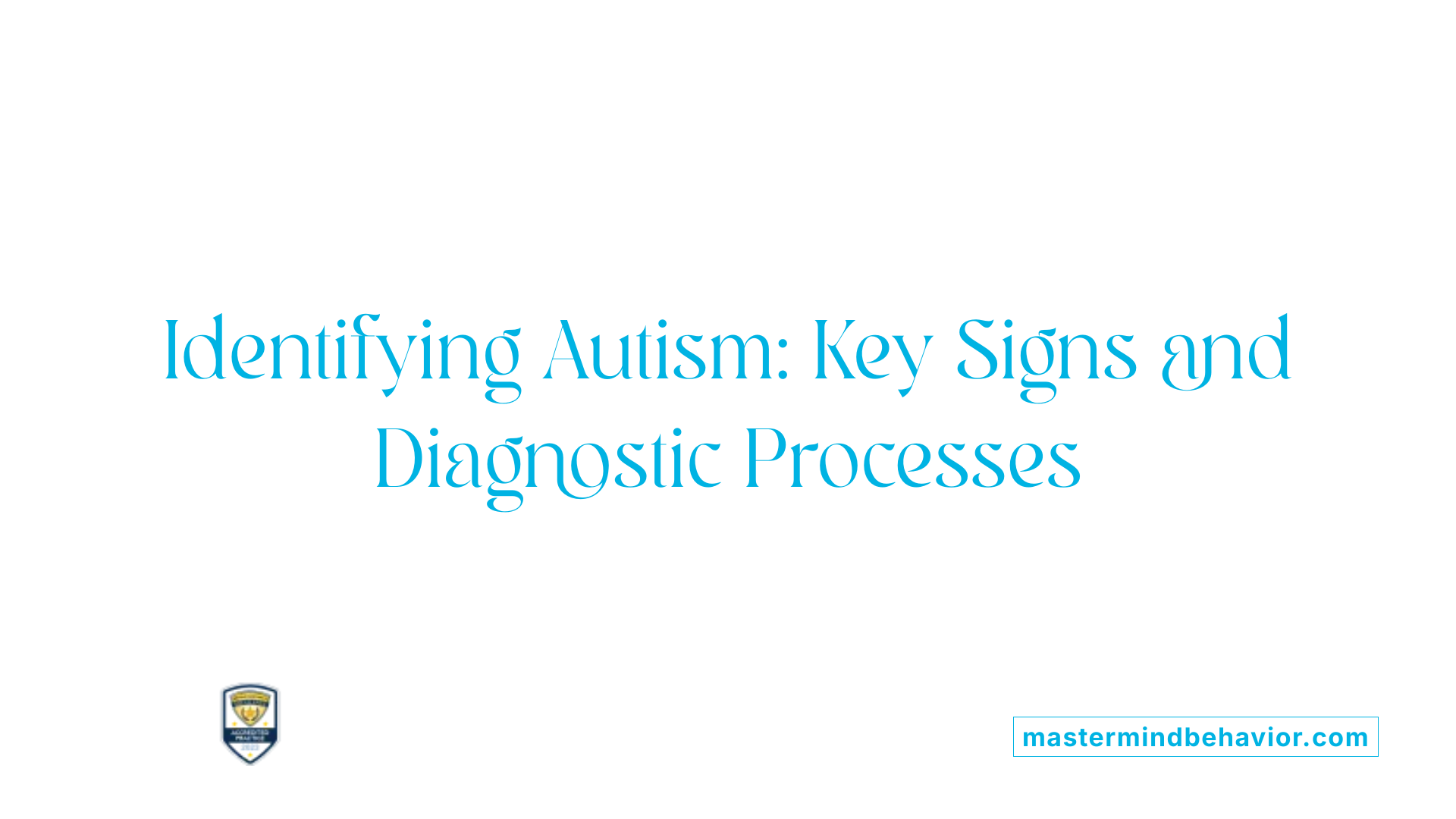Why routines matter help children with autism—according to an Autism Therapist
Why routines matter help children with autism—according to an Autism Therapist
Blog Article
Comprehending the Impact of Behavioral Autism on Every Day Life and Social Communications
You might not understand exactly how deeply behavior autism impacts daily life and social communications. Individuals on the range usually browse a world filled with communication difficulties and sensory overload. These difficulties can lead to disappointment and seclusion, affecting their relationships and general wellness.
Specifying Behavioral Autism and Its Characteristics
Behavioral autism, frequently described as autism spectrum disorder (ASD), includes a series of conditions characterized by difficulties in social communication, interaction, and recurring habits. You might observe that individuals with ASD usually have a hard time to analyze social cues, which can cause misunderstandings in conversations. They may discover it tough to establish eye call or participate in small talk, making social situations really feel overwhelming.
Communication troubles can materialize in numerous means, from delayed speech development to a choice for using less words. Repeated actions, such as hand-flapping or rocking, can work as coping systems to manage stress and anxiety or sensory overload. These attributes can greatly impact daily life, making it vital for you to recognize and sustain those with ASD. By recognizing these qualities, you can promote a setting that advertises approval and urges effective communication, helping individuals with autism flourish in their daily communications.
The Range of Autism: Comprehending Irregularity in Behavior
Autism range problem (ASD) isn't a one-size-fits-all medical diagnosis; it varies widely amongst people. You could notice that some people with ASD display light signs, while others might deal with extra considerable obstacles. This irregularity can manifest in actions, interests, and sensory level of sensitivities. You may run into individuals that are extremely verbal and involve quickly in conversations, while others could like solitary tasks or connect non-verbally.
Additionally, the way individuals with ASD reply to sensory input can vary greatly; some could be overwhelmed by loud sounds or bright lights, whereas others grow in promoting settings. The spectrum likewise consists of differences in social communications; some individuals may have a hard time to translate social cues, while others browse social settings with relative convenience. Recognizing this variability is vital, as it aids you appreciate each individual's distinct experience and tailor assistance to their particular needs, cultivating an extra inclusive environment for everybody.
Communication Difficulties Dealt With by Individuals With Autism
When you connect with people on the autism range, you might observe their unique interaction difficulties. They often face problems with both nonverbal and verbal cues, which can affect their social interactions. Understanding these barriers is important for cultivating much better connections and assistance.
:max_bytes(150000):strip_icc()/VWH-LauraPorter-SpectrumOfAutismTraits-4000x2700-0b5d3311e5794f6ca7e72bdc4672eae5.png)
Verbal Communication Difficulties
Several individuals on the autism spectrum experience spoken communication problems that can substantially influence their day-to-day communications. You may find it testing to express your thoughts, sensations, or needs clearly. This can result in stress for both you and those around you, as misconceptions occur. You may fight with initiating discussions, maintaining a topic, or recognizing subtleties in speech. Commonly, you could like utilizing basic language or recurring expressions, which can restrict your ability to participate in much deeper discussions. Your tone, pace, or volume might not straighten with social expectations, creating others to misunderstand your objectives. Acknowledging these difficulties can aid you and your assistance network create methods to improve interaction and promote better links with others in your life.
Nonverbal Interaction Obstacles
Spoken communication isn't the only obstacle individuals on the autism range face; nonverbal communication obstacles can be just as substantial. These challenges can lead to misconceptions or misinterpretations of social cues, making interactions really feel frustrating or complex. By dealing with nonverbal interaction, you can find methods to improve your social experiences and enhance your general quality of life.
Social Interaction Influences
Social interactions can frequently really feel frustrating due to the one-of-a-kind communication difficulties faced by people with autism. You might have a hard time with analyzing social cues, making it difficult to comprehend sarcasm or body movement. This can lead to misconceptions or uncomfortable minutes in conversations. In addition, initiating and preserving discussions may really feel difficult, causing anxiety in social situations. You may prefer structured environments, making spontaneous communications uneasy. It's additionally usual to experience trouble in participating in tiny talk, which can prevent forming new friendships. Acknowledging these obstacles can assist you discover methods to improve communication, such as exercising social abilities in safe settings or making use of visual aids - Autism Therapist. Comprehending your requirements permits you to browse social interactions with higher self-confidence and ease.
Social Interaction and Partnership Structure in Autism
While structure connections can be testing for individuals with autism, understanding their special perspectives and communication styles can cultivate significant connections. You might see that several people on the range choose direct interaction and might deal with social hints or tiny talk. By being straightforward in your communications, you can assist develop an atmosphere where they feel comfy.
Put in the time to pay attention and observe how they reveal themselves. This insight can guide you in guiding discussions better. Participating in shared interests can also serve as a bridge to deeper links. Whether it's a pastime, a favored program, or a common passion, these usual strings can open doors to relationship.
Every Day Life Regimen: Browsing Techniques and challenges
Maneuvering day-to-day life regimens can be specifically testing for people with autism, particularly when unforeseen adjustments happen. To browse these obstacles, take into consideration carrying out aesthetic schedules or checklists.
Establishing a regimen that includes sensory breaks can also be helpful. You can intend time-outs throughout your day to recharge. It's necessary to communicate with those around you, allowing them understand your requirements and choices. This helps produce an understanding setting.
Finally, practice mindfulness methods to manage stress and anxiety. Straightforward breathing exercises or grounding techniques can make a substantial difference. By including why not look here these methods, you can enhance your day-to-day routine and decrease disturbances, making life feel much more workable.
Staminas and Capabilities of Individuals on the Autism Range
Recognizing life routines is simply one aspect of the autism experience. Numerous individuals on the autism spectrum have impressive strengths and abilities that establish them apart. You might discover that your interest to information is outstanding, allowing you to master tasks that need accuracy and emphasis. Your capability to think outside the box can lead to ingenious solutions in numerous circumstances.
In addition, your memory skills typically radiate, specifically in locations of interest. Autism Behavioral Therapy. This propensity for preserving details can make you a valuable source in areas like technology, scientific research, or art. You might likewise display solid aesthetic thinking, allowing you to imagine complicated ideas and address troubles artistically
Additionally, your distinct perspective on the world can promote empathy and understanding in others, enhancing social interactions. Embracing these toughness not only enhances your self-confidence but additionally aids others value the varied talents you offer the table.
Producing Comprehensive Environments for Individuals With Autism
Creating comprehensive atmospheres for people with autism starts with designing sensory-friendly areas that deal with their unique demands. You can also cultivate chances for social interaction, assisting to develop relationships and connections. By making these adjustments, you'll add to a more inviting atmosphere for everyone.
Designing Sensory-Friendly Spaces
While designing sensory-friendly areas, it's important to assess the one-of-a-kind demands of individuals with autism. Beginning by choosing relaxing colors and soft lights to create a calming atmosphere. Include silent zones where individuals can retreat and recharge when overwhelmed. You'll wish to reduce loud sounds and disturbances, using soundproof materials or white noise equipments to help maintain peace. Consider responsive components like soft fabrics or fidget-friendly objects that can give comfort. Determine that rooms are adaptable, permitting easy rearrangement to accommodate different activities. Lastly, consist of aesthetic routines or clear signage to aid individuals browse the space confidently. By thoughtfully integrating these components, you can produce a welcoming atmosphere that supports sensory needs and advertises overall health.
Promoting Social Interaction Opportunities
Designing sensory-friendly areas not only addresses individual convenience however also establishes the stage for meaningful social interactions amongst people with autism. Urge peer mentoring, pairing people with autism with supportive peers that can assist them through social situations. By carrying out these techniques, you can enhance social chances, helping individuals with browse around these guys autism develop relationships and strengthen their social abilities in a safe, welcoming setting.

Often Asked Inquiries
Just How Can Pals Assistance A Person With Behavioral Autism?
You can support a close friend with behavioral autism by holding your horses, paying attention proactively, and appreciating their limits. Involve in activities they appreciate, communicate honestly, and create a comfortable setting where they feel valued and comprehended.
What Resources Are Available for Parents of Children With Autism?
You can check out different sources for parents of children with autism, consisting of assistance groups, educational sites, and regional social work. Attaching with various other parents can additionally offer useful understandings and shared experiences to help navigate challenges.
Can Behavioral Autism Modification With Time?

Yes, behavior autism can alter over see here now time. You might notice shifts in interaction, social abilities, and behavior as your kid grows. Early intervention and assistance often play important roles in these developing changes.
Just How Do Sensory Sensitivities Impact Life?
Sensory sensitivities can make daily experiences overwhelming. You could fight with loud sounds or bright lights, bring about tension or avoidance. Locating settings that suit your demands can greatly enhance your convenience and general day-to-day live.
What Are Typical Misconceptions Regarding Behavioral Autism?
You could believe behavioral autism just impacts interaction abilities, however it's even more complex. Numerous think people lack empathy or knowledge, which isn't real. Understanding these false impressions aids foster acceptance and assistance for those on the spectrum.
Behavior autism, typically referred to as autism range disorder (ASD), encompasses a variety of problems identified by challenges in social communication, communication, and recurring actions.Social interactions can usually feel frustrating due to the distinct communication challenges faced by individuals with autism.Designing sensory-friendly spaces not just addresses specific convenience but likewise establishes the stage for significant social communications among individuals with autism. Motivate peer mentoring, coupling individuals with autism with supportive peers who can lead them via social circumstances. By carrying out these techniques, you can enhance social opportunities, assisting individuals with autism develop friendships and strengthen their social skills in a secure, inviting setting.
Report this page